
As today is New Year’s Eve, I thought I’d share with you some resources for learning more about how the New Year was marked in Tudor times…
[Read More...]
As today is New Year’s Eve, I thought I’d share with you some resources for learning more about how the New Year was marked in Tudor times…
[Read More...]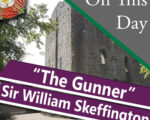
On this day in Tudor history, 31st December 1535, in the reign of Henry VIII, Sir William Skeffington, Lord Deputy of Ireland, died at Kilmainham in Dublin.
Skeffington had become known as “the Gunner” following his use of heavy artillery while taking Maynooth Castle in County Kildare, where he killed, or had executed, the whole garrison.
Find out more about the life and career of Sir William Skeffington in this talk…
[Read More...]
On this day in Tudor history, 30th December 1552, in the reign of King Edward VI, Spanish humanist scholar, translator, author and Protestant apologist, Francisco de Enzinas died at Strasbourg from the plague. He was buried there the next day. Humanist Francisco had changed his name to Francis Dryander after leaving Spain to study at Louvain.
Dryander fit a lot into his thirty-four years of life. He escaped from prison and was an outlaw, he translated the Bible, he taught Greek in England, he was supported by Archbishop Cranmer and the Duchess of Suffolk, and published several works.
Find out more about the accomplished Francis Dryander in this talk…
[Read More...]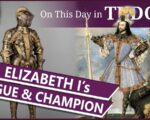
On this day in history, 29th December 1605, in the reign of King James I, forty-seven-year-old Tudor nobleman George Clifford, 3rd Earl of Cumberland was buried at Holy Trinity Church, Skipton, Yorkshire.
Clifford was a courtier, naval commander, privateer, Elizabeth I’s champion and a man she called her “rogue”.
Find out all about this Earl of Cumberland, his unhappy marriage, his voyages and what it meant to be the queen’s champion, in this talk…
[Read More...]
Recently, as part of the launch for my “Anne Boleyn, the Woman who changed England” online event (28th February to 6 March 2022), I did three livestreams about Anne Boleyn.
If you didn’t manage to catch them live, here they are, plus the extra I did about my January masterclass, which is a bonus if you buy your tickets before 31st December.
[Read More...]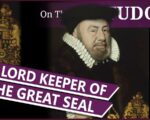
On this day in Tudor history, the feast of Childermas, 28th December 1510, lawyer, administrator and Lord Keeper of the Great Seal, Sir Nicholas Bacon, was born. Bacon was the father of the famous philosopher, statesman, scientist and author, Sir Francis Bacon.
Bacon wasn’t just a lawyer and statesman, he was also very concerned with the education of the young, and did much to support it.
Find out all about Sir Nicholas Bacon, his life and career, and how he was banished from court at one point, in this talk…
[Read More...]
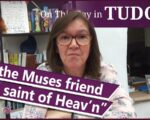
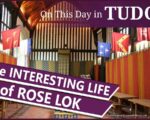
On this day in Tudor history, 26th December 1526, Protestant Rose Lok was born.
Rose lived well into her 80s and had an interesting life, being a Protestant exile, a businesswoman, and being the daughter of a man who supplied Anne Boleyn with religious books. She also had a ship named after her!
Find out all about Rose Lok in this talk…
[Read More...]
I hope you are enjoying a wonderful festive season!
In honour of the season, I bring you this gift – a Christmas Crossword Puzzle to test your knowledge of Christmas in Tudor times.
[Read More...]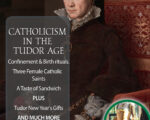
The Tudor period saw great upheaval in religious beliefs throughout England. At the start of the period, the country was very much Catholic, but things changed and changed again as different monarchs took control and the country moved towards Protestantism. This month’s magazine focuses on Catholicism.
[Read More...]
Happy Christmas!
On this day in Tudor history, 25th December 1587, Brian Darcy, magistrate, Sheriff of Essex, witch-hunter and contributor to the 1582 “A true and just recorde of the information, examination and confession of all the witches, taken at S Oses [St Osyth]”, died.
“A True and Just Recorde” argued for harsher punishments for those found guilty of witchcraft, and Darcy was personally responsible for a number of deaths of people accused of witchcraft.
Find out more about this zealous witch-hunter in this talk…
[Read More...]
Today’s final Advent Calendar treat from our archives is from our Tudor Society e-book series and is on “Christmas in Tudor Times”.
Enjoy!
[Read More...]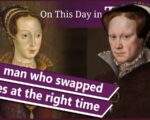
On this day in history, 24th December 1604, Christmas Eve, Sir Thomas Cornwallis, Comptroller of the household of Mary I and member of Parliament, died at about the age of eighty-six.
Cornwallis had been active putting down rebellion in 1549 and during the succession crisis of July 1553 swapped sides at just the right time, recanting his proclamation for Jane as queen and proclaiming for Mary instead, He was rewarded for this when Mary came to the throne.
Of course, he wasn’t so much a favourite in the reign of Elizabeth I, but a friendship with a man close to Elizabeth may have helped him escape trouble.
Find out more about Sir Thomas Cornwallis in this talk…
[Read More...]
Here’s our Christmas message to you and THANK YOU to all the members who support the vital work of the Tudor Society.
[Read More...]
On this day in Tudor history, 23rd December 1558, just over a month after her accession, England’s new queen, Elizabeth I, daughter of King Henry VIII and his second wife, Anne Boleyn, moved from Somerset House to Whitehall Palace, which became her principal residence.
Whitehall, formerly York Place, had once been home to her mother, Anne Boleyn, and had been the setting of Anne’s marriage to Henry VIII. I wonder if Elizabeth felt close to her mother there.
Find out more about Whitehall Palace, and also Somerset Place, the property Elizabeth left, in this talk…
[Read More...]
Today’s Tudor treat is very Christmassy, it’s our Christmas edition of Tudor Life Magazine from 2020.
There’s lots in it to keep you occupied today if you’re already organised for the next few days.
[Read More...]
Today’s Tudor treat is from our Tudor Society archives of expert talks.
In this talk, Phil Downing, manager of Harvington Hall talks about “Terrifying lives of Priests and their Priest Holes: the darker side of the Elizabethan period”. It’s a fantastic talk, one of my all time favourites.
[Read More...]
On this day in Tudor history, 22nd December 1557, Protestant martyrs John Rough and Margaret Mearing, were burnt at Smithfield for heresy.
John Rough was a Scot who’d encouraged John Knox to be a pastor, but ended in days in England. Interestingly, the woman he died with was a woman he’d excommunicated from his congregation, believing her to be a spy. Although she’d been angry with her treatment, she was not the spy who betrayed him, she visited Rough in prison and was arrested after she tried to confront the real spy.
Find out about John Rough’s life and what brought him to England, how he’d come to be arrested, and what happened with Margaret Mearing, in this talk…
[Read More...]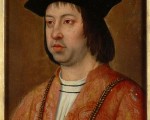
Today’s Tudor treat from the Tudor Society archives is an expert answer to one of our member’s questions.
Tudor Society member Angela asked the question “Should Ferdinand of Aragon have insisted on Katherine’s return when Prince Arthur died?”. Historian Amy Licence, who is the author of Catherine of Aragon: An Intimate Life of Henry VIII’s True Wife has answered Angela’s question…
[Read More...]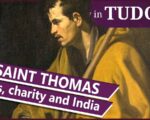
21st December in Tudor times was the Feast of St Thomas the Apostle, or Didymus or Doubting Thomas. The apostle who wouldn’t believe Christ had been resurrected until Christ appeared in front of him and he’d felt the nail wounds and the wound in his side.
Thomas was known for his generosity, and in Tudor times, those in need would go “a-Thomasing”, collecting alms. But there are also other traditions associated with the feast day, such as pie-making. And did you know that Thomas also has links to India?
Find out more about St Thomas, his story, his feast day and the traditions associated with him, in this talk…
[Read More...]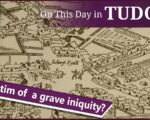
On this day in Tudor history, 20th December 1583, the day after his son-in-law, John Somerville, had been found dead in his cell, Warwickshire gentleman Edward Arden was hanged, drawn and quartered at Smithfield.
Arden, who was related to William Shakespeare’s mother, Mary Arden, and married to a member of the Throckmorton family, had been found guilty of treason, after being implicated in Somerville’s plot to kill the queen.
But was Arden actually guilty? Why didn’t others involved end up being executed too?
Find out more about Edward Arden and what happened in 1583, in this talk…
[Read More...]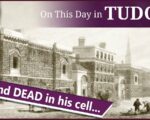
On this day in Tudor history, 19th December 1583, twenty-three-year-old convicted conspirator, John Somerville, was found dead in his cell at Newgate Prison. His death was said to be suicide, due to his poor mental health, but some Catholics believed that he had been killed.
Somerville had been found guilty of conspiring to assassinate the queen, but did he really mean to? Was he mentally ill? Was he manipulated by others?
Find out more about John Somerville in this talk…
[Read More...]As I’ve just finished running my “Anne Boleyn, the Woman behind the Myths” online event, I’ve been inspired to test your knowledge of some of the myths that surround her.
How much do you know about Anne Boleyn myths?
Test your knowledge with this fun crossword puzzle, or watch the videos below for help first!
[Read More...]
On this day in Tudor history, 18th December 1575, in the reign of Queen Elizabeth I, fifty-six-year-old historian, Catholic apologist, priest and former Archdeacon of Canterbury, Nicholas Harpsfield, died in London.
Harpsfield and his brother, John, had been imprisoned since the early 1560s for refusing to swear the Oath of Supremacy, but had been released in 1574 on the grounds of ill-health.
In Mary I’s reign, he had been involved in the persecutions of Protestants, and martyrologist John Foxe described him as “the sorest and of leaste compassion” of all the archdeacons involved.
Find out more about his life, career and rise, his works, and his end, in this talk…
[Read More...]
Glastonbury Abbey in Tudor times was a majestic powerhouse of monastic prayer. Learn all about Abbot Richard Whiting
[Read More...]
On this day in Tudor history, 17th December 1559, fifty-five-year-old Matthew Parker was consecrated as Queen Elizabeth I’s Archbishop of Canterbury. It was an office which Parker did not want and would not have accepted if “he had not been so much bound to the mother”.
What did he mean by that?
Well, when he was Anne Boleyn’s chaplain in 1536, the queen had met with him just six days before her arrest and he made her a promise.
Find out more about Matthew Parker, his life and that meeting with Anne Boleyn, in this talk…
[Read More...]
I’m sure you have never really thought about the origins of the humble apple, but it turns out that it’s fascinating and deeply entrenched in Tudor history
[Read More...]
Just a reminder that our annual Tudor Society virtual Christmas party/social will take place in the chatroom tomorrow, 17th December.
Wear your Christmas jumper, bring your favourite tipple and snack, and enjoy an hour of chatting with other Tudor Society members. It’ll be a lovely hour, they always are.
[Read More...]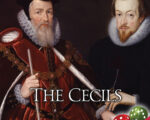
Today’s Tudor treat from our archives is our December 2018 edition of Tudor Life Magazine, which took the famous Cecil family as its focus. Of course, no December magazine would be any good without a Christmas section packed with Tudor fun, games and even recipes. It’s a fun one, so do enjoy!
[Read More...]